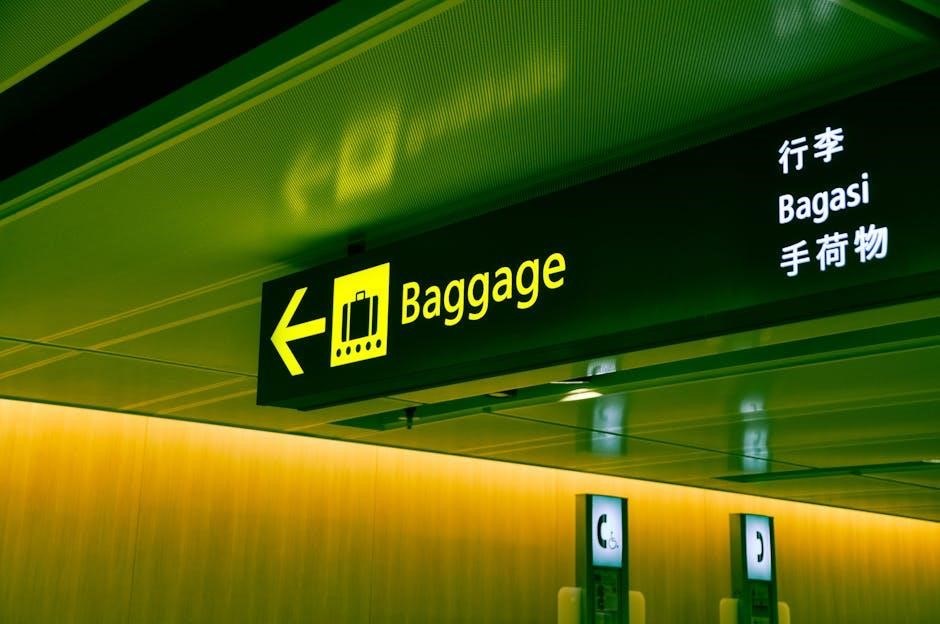Internalized homophobia represents the involuntary acceptance of societal negativity towards LGBTQ+ individuals. This internal conflict manifests as shame, self-hatred, and diminished self-worth. Understanding its root causes and impact is crucial for fostering self-acceptance and well-being within the LGBTQ+ community.
Defining Internalized Homophobia
Internalized homophobia is the deep-seated fear and hatred of one’s own sexual orientation or gender identity. It involves internalizing negative stereotypes and prejudices from society, leading to feelings of shame, guilt, and self-rejection within LGBTQ+ individuals.
The internalization of societal negativity
The core of internalized homophobia lies in absorbing negative messages from the world. These messages, pervasive in media, religion, and culture, portray LGBTQ+ identities as wrong or inferior. This constant exposure leads individuals to internalize these harmful beliefs, directing them inward. It’s like a voice echoing negativity, fostering self-doubt and shame. The result is a distorted self-perception, making it difficult to embrace one’s true identity. Recognizing this internalization is the first step toward dismantling these ingrained beliefs and fostering self-acceptance within the LGBTQ+ community, and a step towards building a more positive self-image.
Manifestations of shame and self-hatred
Internalized homophobia manifests in various ways, often as deep-seated shame and self-hatred. These feelings can trigger denial, causing individuals to suppress their true identities to avoid stigma. Some may exhibit compensatory behaviors, exaggerating gender stereotypes to fit in. Discomfort with one’s sexual orientation can also lead to distancing from the LGBTQ+ community. Negative self-perception, a common outcome, fosters feelings of unworthiness. This internal conflict increases the risk of mental health issues like depression and anxiety. Recognizing these manifestations is crucial for identifying internalized homophobia and beginning the journey toward self-acceptance and healing within the LGBTQ+ community.

Root Causes of Internalized Homophobia
Internalized homophobia stems from the absorption of negative societal messages. These messages, perpetuated through media, religion, and cultural norms, instill feelings of shame and self-hatred. Understanding these origins is vital for dismantling internalized homophobia.
Exposure to negative messages from media
Media often perpetuates harmful stereotypes and negative portrayals of LGBTQ+ individuals, contributing significantly to internalized homophobia. These depictions can range from overt discrimination to subtle biases, shaping perceptions and fostering self-doubt within the LGBTQ+ community. Constant exposure to such messages leads to the internalization of these negative beliefs, resulting in feelings of shame, guilt, and low self-worth. The media’s influence is a powerful factor in the development and reinforcement of internalized homophobia, making critical media literacy essential for LGBTQ+ individuals and allies alike.
Influence of religious and cultural norms
Religious and cultural norms can significantly contribute to internalized homophobia by promoting negative attitudes and beliefs about LGBTQ+ identities. Traditional teachings and cultural expectations often reinforce heteronormativity, leading individuals to internalize feelings of shame, guilt, and self-hatred. These norms create an environment where LGBTQ+ individuals feel pressured to conform, suppress their true selves, or face rejection. The impact of religious and cultural influences is particularly strong in communities where these beliefs are deeply ingrained, making it challenging for LGBTQ+ individuals to accept themselves and find support.
Impact of family and peer attitudes
Family and peer attitudes wield considerable influence on the development of internalized homophobia. Rejection, discrimination, or lack of acceptance from family members and peers can instill deep-seated feelings of shame and self-hatred in LGBTQ+ individuals. Negative comments, disapproval, or exclusion can lead to internalizing the belief that being LGBTQ+ is wrong or undesirable. Conversely, supportive and accepting family and peer environments can foster self-acceptance and resilience, mitigating the negative effects of societal stigma. The impact of these relationships underscores the importance of creating inclusive and affirming spaces for LGBTQ+ youth.
Impact on Mental Health and Well-being
Internalized homophobia significantly affects mental health, increasing the risk of depression, anxiety, and lowered self-esteem. Strained relationships with family and friends further compound these challenges, impacting overall well-being and quality of life.
Increased risk of depression and anxiety
Internalized homophobia fosters a breeding ground for mental health challenges. The constant barrage of negative self-talk and feelings of shame can lead to persistent sadness, hopelessness, and a loss of interest in activities once enjoyed, hallmark symptoms of depression. Simultaneously, the fear of judgment and rejection can trigger heightened anxiety, manifesting as excessive worry, social avoidance, and even panic attacks. These intertwined struggles significantly diminish overall well-being, highlighting the urgent need for support and self-acceptance strategies.
Lowered self-esteem and self-worth
Internalized homophobia erodes the foundation of self-esteem and self-worth. When individuals internalize negative societal messages, they begin to believe they are inherently flawed or unworthy of love and acceptance. This can manifest as constant self-criticism, feelings of inadequacy, and difficulty recognizing their own positive qualities. The resulting low self-esteem can permeate various aspects of life, impacting relationships, career aspirations, and overall sense of purpose. Overcoming this requires challenging negative beliefs and cultivating self-compassion to rebuild a positive self-image and sense of inherent worth.
Strained relationships with family and friends
The shame and self-hatred stemming from internalized homophobia can severely strain relationships with family and friends. Individuals may withdraw emotionally, fearing rejection or judgment if they reveal their true selves. They might also experience difficulty forming genuine connections, as internalized negativity can make it hard to trust others and believe they are worthy of love and support. This can lead to isolation and loneliness, further exacerbating feelings of low self-worth. Overcoming these challenges requires open communication, seeking support from understanding individuals, and gradually building trust and acceptance within relationships.
Strategies for Overcoming Internalized Homophobia
Overcoming internalized homophobia involves self-awareness, challenging negative beliefs, and building a supportive LGBTQ+ network. These strategies cultivate self-acceptance, resilience, and a positive LGBTQ+ identity, fostering mental well-being and authentic living.
Self-awareness and acceptance techniques
The initial step involves acknowledging internalized beliefs through self-reflection, journaling, and mindfulness. Explore LGBTQ+ history, rights, and achievements to counter negative societal messages. This process enables individuals to identify negative thought patterns and understand the origins of their internalized homophobia. Practicing self-compassion, being patient, and celebrating progress are essential. Regular self-reflection and seeking feedback from trusted individuals can further facilitate the journey toward self-acceptance and authentic living. Acknowledging and validating one’s feelings is crucial for promoting mental and emotional well-being.
Challenging negative beliefs through cognitive restructuring
Actively challenge negative self-talk by employing cognitive restructuring. Replace negative thoughts with positive affirmations and practice reality testing to assess the validity of negative beliefs. Cultivate self-compassion through positive self-talk. Cognitive restructuring involves identifying, questioning, and reframing negative thought patterns associated with internalized homophobia. By replacing these harmful thoughts with more positive and realistic ones, individuals can improve their self-esteem and reduce feelings of shame and guilt. This technique empowers individuals to take control of their thought processes.
Building a supportive LGBTQ+ network
Surrounding yourself with supportive individuals is crucial. Join LGBTQ+ groups, connect with allies, and participate in community events to foster a sense of belonging. Build connections with those who understand and validate your experiences. A strong support system can provide a safe space to share feelings, challenge negative thoughts, and celebrate your identity. Engaging with others who have similar experiences can reduce feelings of isolation and promote self-acceptance. This network acts as a buffer against societal negativity. Sharing experiences reduces feelings of shame and strengthens self-worth.

Seeking Professional Help
Professional guidance offers valuable support in overcoming internalized homophobia. LGBTQ-affirmative therapy provides a safe space to explore feelings, challenge negative beliefs, and develop self-acceptance strategies. Therapists offer tools for healing and growth.
Benefits of LGBTQ-affirmative therapy
LGBTQ-affirmative therapy offers a safe and supportive environment where individuals can explore their feelings and experiences without judgment. This therapeutic approach acknowledges and validates LGBTQ+ identities, fostering self-acceptance and reducing internalized stigma. Through affirmative therapy, clients can challenge negative beliefs, develop coping mechanisms, and build resilience. It helps individuals navigate unique challenges related to their sexual orientation or gender identity, improving their overall mental health and well-being. Furthermore, it promotes self-compassion and empowers individuals to embrace their authentic selves, leading to healthier relationships and a more fulfilling life within the LGBTQ+ community and beyond.
Cognitive-Behavioral Therapy (CBT) and Acceptance and Commitment Therapy (ACT)
Cognitive-Behavioral Therapy (CBT) and Acceptance and Commitment Therapy (ACT) are effective therapeutic approaches for addressing internalized homophobia. CBT helps individuals identify and challenge negative thought patterns and beliefs associated with their sexual orientation or gender identity, replacing them with more positive and realistic ones. ACT encourages acceptance of difficult emotions and thoughts without judgment, promoting psychological flexibility and values-based action. Both therapies equip individuals with coping skills to manage distress, reduce self-criticism, and enhance self-compassion. By combining cognitive restructuring with acceptance strategies, CBT and ACT empower individuals to live authentically and build a more fulfilling life, free from the constraints of internalized homophobia.

Embracing LGBTQ+ Identity
Embracing one’s LGBTQ+ identity involves expressing authenticity and celebrating personal milestones. Engaging in advocacy and activism can further empower individuals, fostering a sense of community and promoting positive change. It is about living proudly.
Expressing authenticity and celebrating milestones
Authenticity involves aligning your external presentation with your internal sense of self. It’s about living in accordance with your values and beliefs, free from the constraints of societal expectations. Expressing your true identity, whether through clothing, hobbies, or relationships, is a powerful act of self-affirmation. Celebrating milestones, both big and small, validates your journey and reinforces your self-worth. Acknowledge achievements in self-acceptance, coming out, or overcoming challenges related to internalized homophobia. Sharing these moments with supportive friends and family can further amplify the joy and significance of these personal triumphs, fostering a stronger sense of self.
Engaging in LGBTQ+ advocacy and activism
Participating in LGBTQ+ advocacy and activism is a transformative way to address internalized homophobia while contributing to a more inclusive society. Activism provides a platform to challenge discriminatory laws, combat prejudice, and raise awareness about LGBTQ+ issues. By lending your voice to the cause, you empower yourself and others to dismantle negative stereotypes and promote equality. Advocacy can take many forms, from volunteering for LGBTQ+ organizations to engaging in peaceful protests and supporting inclusive legislation. This engagement will promote awareness on social media and support legislation protecting LGBTQ+ rights. This collective effort helps dismantle internalized shame and foster a sense of pride.

Maintaining Progress and Building Resilience
Overcoming internalized homophobia is ongoing. Continuous learning, consistent self-care, and proactively building resilience are vital for sustained progress. These practices reinforce self-acceptance, foster positive coping mechanisms, and solidify a strong sense of self-worth over time.
Continuous learning and self-care practices
To maintain momentum in overcoming internalized homophobia, prioritize continuous learning about LGBTQ+ issues and advancements. Invest in personal development activities that boost self-esteem and resilience. Regularly seek feedback from trusted individuals to stay grounded and aware of your progress.
Simultaneously, implement consistent self-care practices that nurture your mental and emotional well-being. Engage in activities like exercise, healthy eating, meditation, hobbies, and emotional processing to effectively manage stress and promote relaxation. These combined efforts will fortify your journey toward self-acceptance and lasting resilience.
